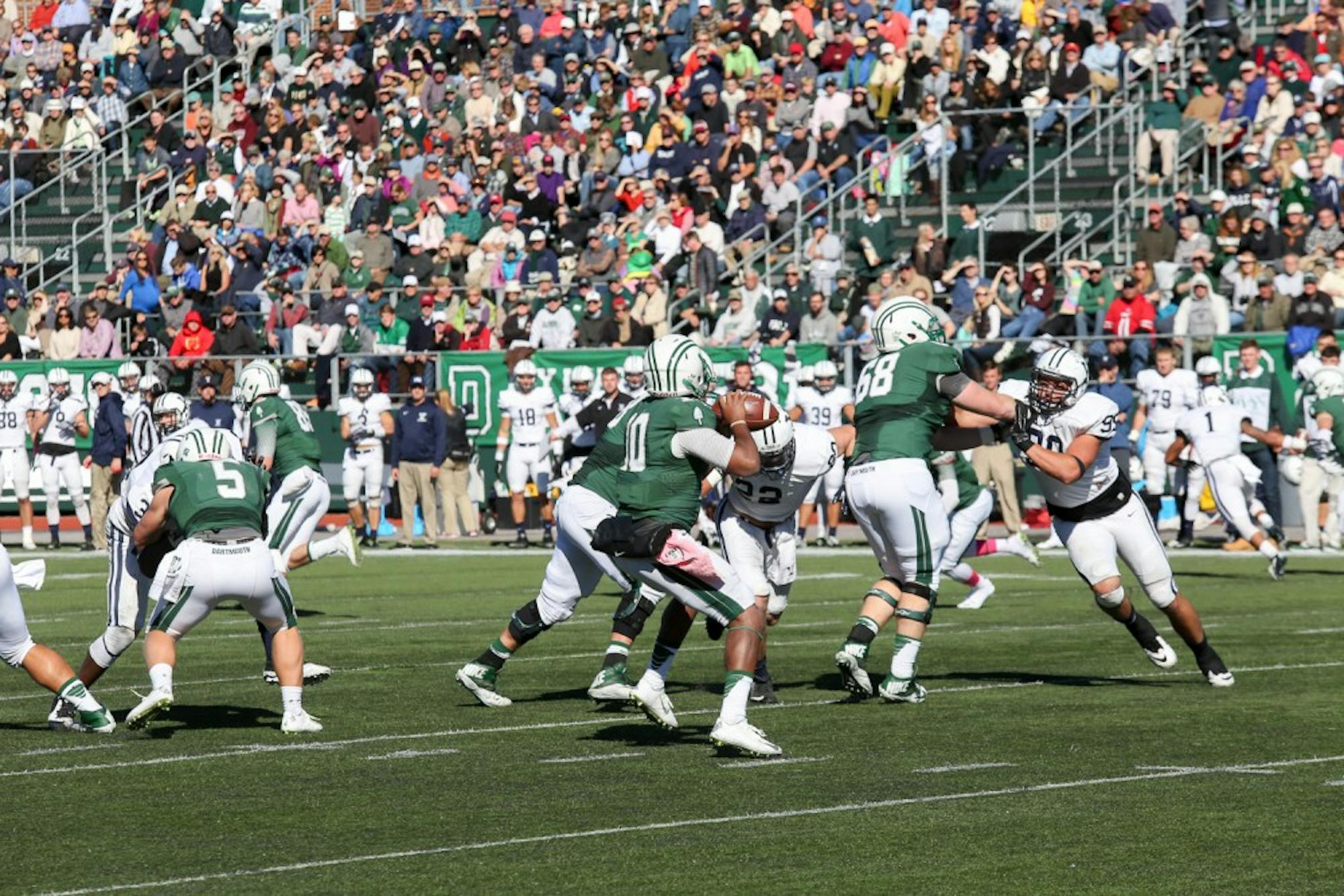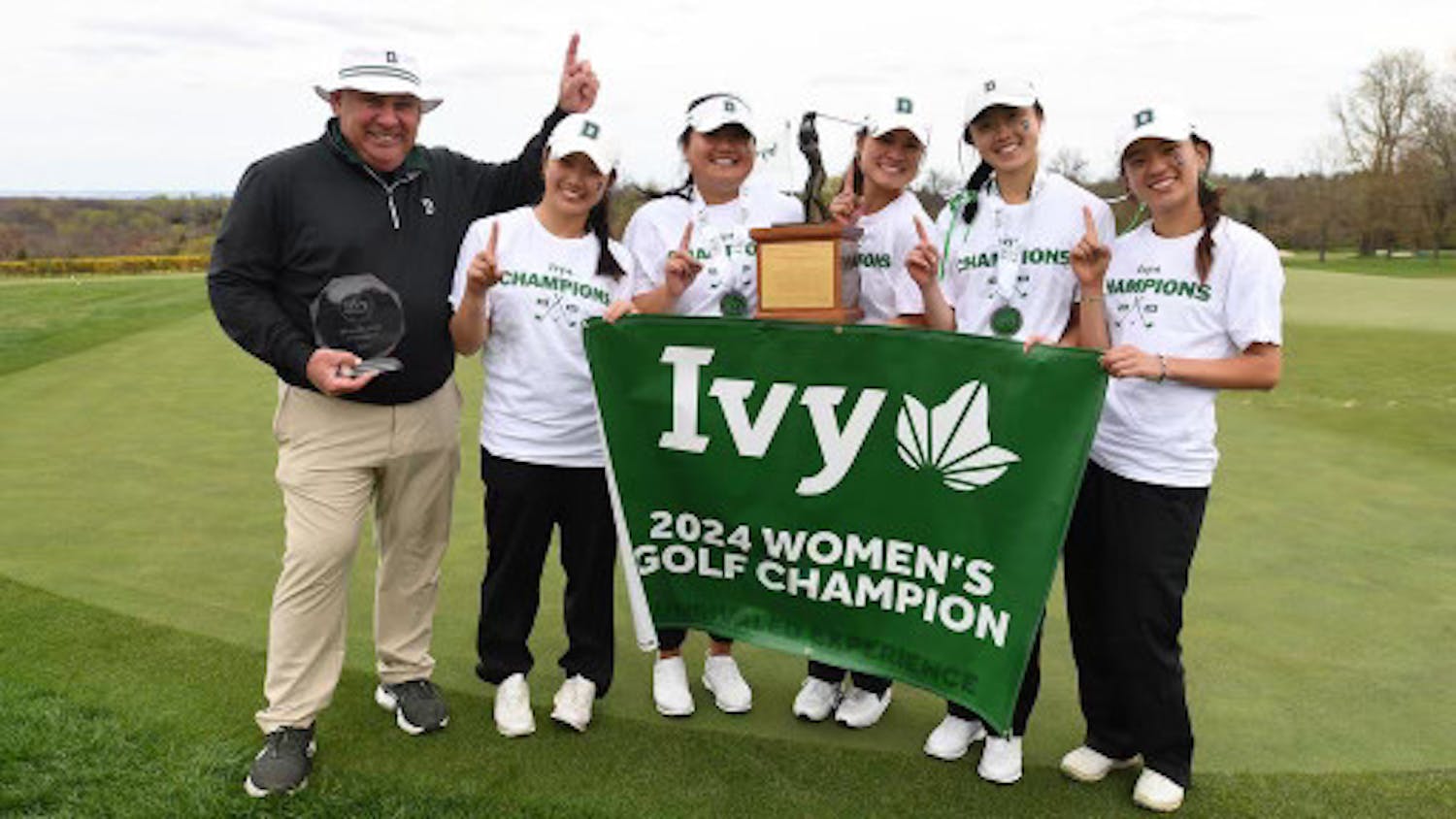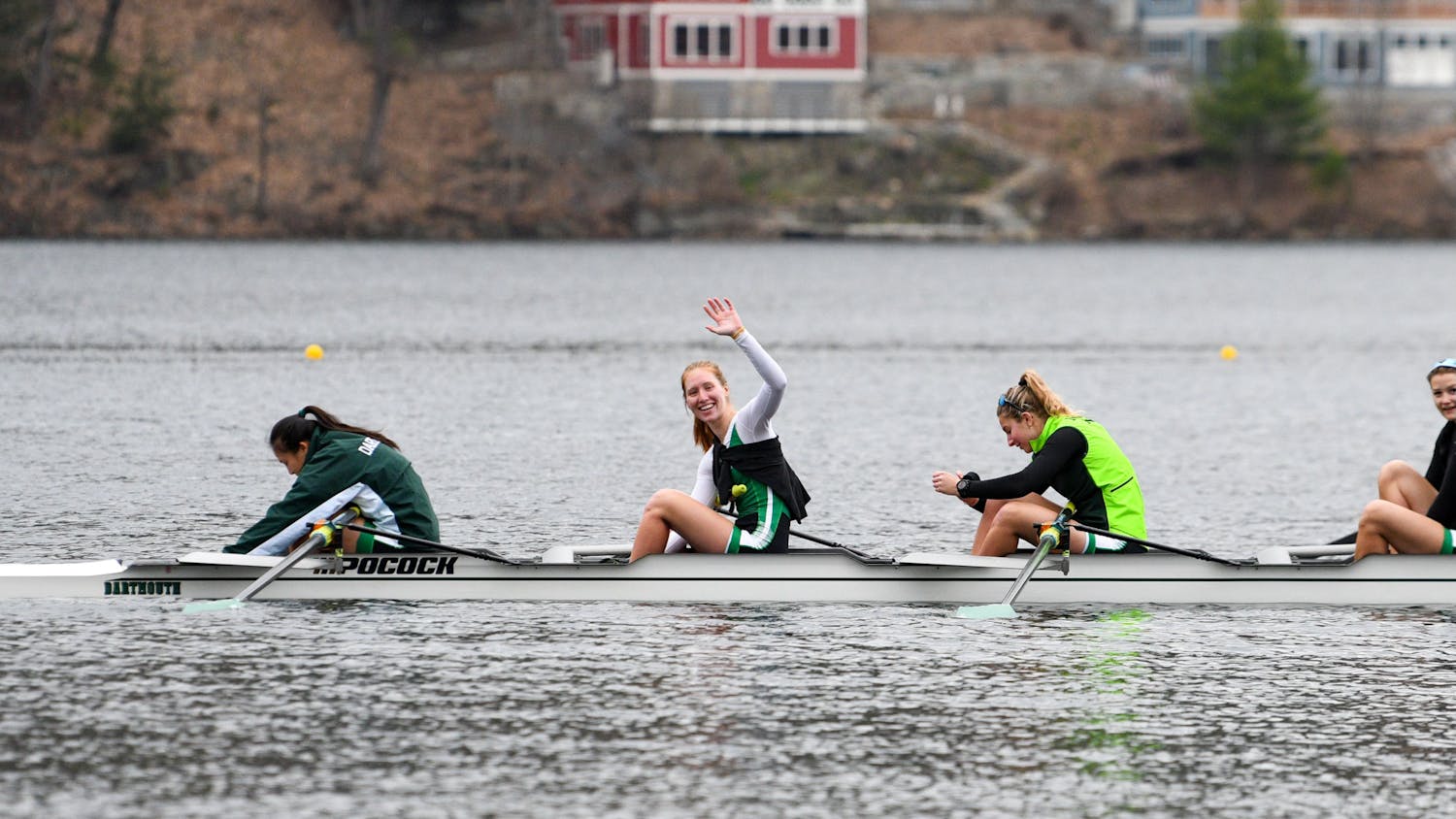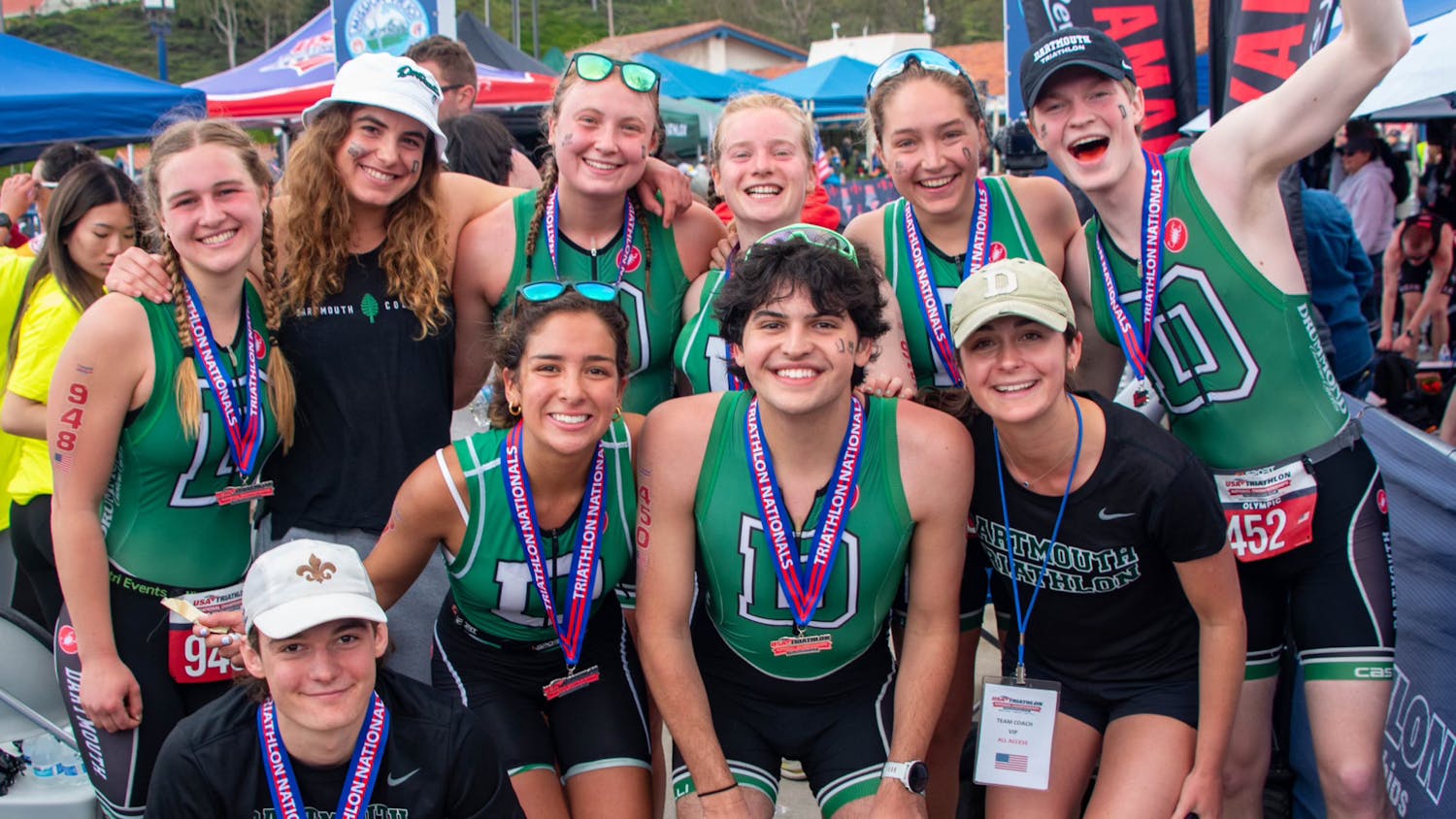“If we don’t change the way we teach the game, we won’t have a game to teach.”
That is the mantra that has motivated football head coach Buddy Teevens, and it is one that he has embodied over the last five years. As the sport faces a looming existential crisis due to a tremendous rise in concern over concussive head injuries, Teevens has distinguished himself simply by choosing to take action.
For decades, studies on concussions pointed to a link between repetitive brain trauma and long-term damage in a player’s life. But it was not until recently that public concern and media scrutiny around the issue increased. Greater information on the post-retirement conditions of former NFL players emerged, demonstrating the result of a career’s worth of repetitive concussions in the form of depression, dementia and Alzheimer’s disease, as well as increased incidence of suicide. The focus naturally moved to current players as well — lasting symptoms of concussions no longer meant the wear-and-tear of football ended at retirement. As a result, players are now considering retiring increasingly earlier in their careers for the sake of their lifelong health.
Notably, the most powerful organization in the sport — the National Football League — has consistently whitewashed and downplayed the severity of this concussion crisis throughout the last decades, conceding only in 2009 that concussions could have lasting consequences.
Around the time of this concession, Teevens began to hear a broader conversation about this issue at the national level. One key discussion came after going to an offseason practice to see one of his former players, Nick Schwieger ’12, who had signed a free agent contract with the St. Louis Rams. There he had the opportunity to speak with Rams head Jeff Fisher, and Teevens said he asked about concussions.
“His response was, ‘We never tackle. We can’t in season by union rules, but in preseason, we opt not to,’” Teevens said. “As he put it, ‘Guys at this level, they know how to hit and they know how to take a hit.’ And that kind of resonated with me.”
Perhaps the most significant decision by Teevens in regards to addressing the issue of concussions and improving player safety occurred shortly thereafter.
Two weeks before the team’s first spring practice, Teevens said he kept wondering to himself why the team continued to tackle when practicing. He said he started studying the team’s tapes and watching how the tackles were made and thought the team would be able to replicate some of the tackling done in games through drills.
“So that’s what I did, and I announced to my staff that Monday that we were not going to tackle in our spring practices — and it was comical,” Teevens said. “They’re like, yeah right, they’re waiting for the punchline. And I said, ‘I’m serious, we’re not going to tackle,’ and guys got upset. But I was convinced it was workable, and it would benefit the health of my players. The biggest thing was concussions. We don’t hit, we’ll have fewer.”
During the season following the spring practices in which Teevens banned player-on-player tackling, missed tackles by the team dropped 50 percent, Teevens said. Now a few years later, on top of this reduction in missed tackles, a Dartmouth player has finished in the top three for tackles in the Ivy League in each of the last two seasons. Teevens considers the feat further evidence that his non-tackling practices do not hurt the team but rather help it. Moreover, the reformed practice mentality provided another plus.
“The other side benefit is, when you’re hitting each other, guys are going to get sore, get hurt,” he said. “Your front-line guys quite often miss a lot of practice time. So the opportunity to improve your units is kind of limited. What we found unexpectedly, more of the front-line guys were able to practice for more time during the course of the season.”
By embracing such an unorthodox style, the non-tackling practice approach soon brought attention from outside of Hanover. Terry O’Neil, a multiple Emmy Award winner, TV producer and former NFL executive, wanted to learn more and contacted Teevens. Near that same time, O’Neil had founded “Practice Like Pros,” an initiative which — citing that 60 to 75 percent of head trauma in high school football occurs in practice, compared with 3 percent for the NFL — advocates a reduction in contact in high school football
Teevens received an invitation to speak with the group, which included notable NFL names such as Mike Ditka, Tony Dorsett, Anthony Munoz and Leonard Marshall. At a presentation in which he explained his non-contact methods, Teevens encountered some of the same harsh initial reaction he had seem before. At a broader level, it marked one of the first key steps in his effort to improve the sport’s safety — and a positive one.
Interestingly, Dartmouth practices in the same manner professionals in the NFL do. Because of NFLPA union rules, NFL players do not tackle during in-season practices, Teevens said. The motivation behind the Practice Like Pros initiative also stems from this fact.
“Last year, I think there were four concussions [in NFL practices],” Teevens said. “So how does that happen? It’s intentional that you don’t jeopardize each other. There’s a respect at the NFL level that you don’t want to jam a guy’s career up, but I’ve found that same mindset permeates our squad. You rarely see a head-to-head contact. Has it hurt us in terms of performance? No.”
After coaching football at different schools, levels and positions for the last 36 years, Teevens points to a combination of prior coaching experiences that laid the philosophical groundwork for his ban on player tackling in practice, and for his impetus to address player safety.
“[Former University of Florida head coach] Steve Spurrier was very influential, and he would always say, ‘get your players to Saturday, get them to gameday,’ — that was kind of our little mantra,” Teevens said. “The message was essentially be smart about what you do with them. We had contact, but his advice [for] a position coach was to limit that.”
Teevens also mentioned working with Bill Walsh, the former head coach of the San Francisco 49ers and Stanford University’s football team, after Walsh had returned to Stanford as an administrator. They would have meals together, Teevens said, where they would talk about their players and how to keep them safe. Players’ safety, Teevens said of Walsh, was “one of his things.”
“[Walsh said] to really take care of your players as best you can, minimize contact,” Teevens said. “So a lot of it evolved through a collective experience, mine as a player, and as a coach.”
It’s instructive to note that much of the thought and motivation behind Teevens’s approach to practices resulted from conversations with prominent figures in the football world. For all of the insufficient responses to the concussion crisis by the football establishment, the people closest to the players still hold their safety and health with great concern. But it was Teevens who could piece it all together and form a constructive response.
Throughout the years of non-contact practices under Teevens’s helm, players did not always understand or fully accept the approach. The experience of current Big Green linebacker Will McNamara ’16 exemplifies this well.
“When I first came here, I wasn’t totally bought in on it,” he said. “I grew up on the south side of Chicago where football was something you proved you were good at by being the hardest hitter and the toughest guy,” McNamara said.
While barring contact in practice reduced injuries and strengthened the team as a whole, Teevens still felt he could improve his approach. Wanting to reproduce tackling with a moving object on the practice field, Teevens approached fellow Class of 1979 member and current Thayer School of Engineering researcher John Currier with an idea. During 2013, Teevens funded the expenses of a capstone engineering project for Thayer students with the aim of creating a mobile tackling dummy.
Elliot Kastner ’13 — who played for Teevens from 2009 to 2013 and worked on the project — noted that after developing the device two years ago, he and his team resumed working on it this summer. Shortly after its completion and rollout, the Mobile Virtual Player — a remote-controlled tackling dummy that is able to effectively replicate tackling without player-on-player contact — gained widespread attention from multiple national media outlets, culminating last week with a television appearance on “The Late Show with Stephen Colbert.”
Kastner credits the interest in the MVP to where the sport of football is with confronting the concussion crisis and focusing on player safety, as well as to the advancements in practice technology.
“Right now we’re in the perfect storm of where the NFL is at with concussive head injuries, as far as how they’re dealing with them. They’ve really been challenged in the last year or so to address the issue,” Kastner said. “We’re [also] bringing out a product at a point when the football world has seen no improvement in sports equipment in the last 60 years. A tackling dummy has been a tackling dummy since the 1930s.”
Additionally, Kastner said that upward of five or six NFL teams have inquired about his device, along with other collegiate and high school teams. News about the technological invention has also reached beyond the United States, as international rugby teams have approached Kastner and his team about the possibility of acquiring the MVP.
Despite only being in use since August, the MVP — through the eyes of coaches, players and its developers — has already produced wide-ranging benefits.
“This year,” Kastner said, “with implementing the MVP for having contact at practice with something that is substantially safer to tackle than an actual player, while simulating that player effectively, has dramatically improved the tackling performance of players on gameday.”




